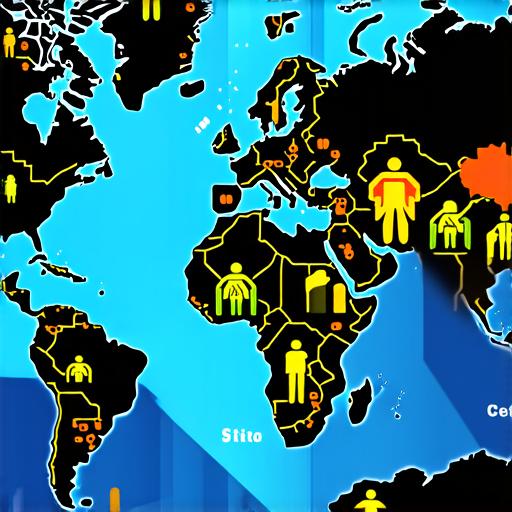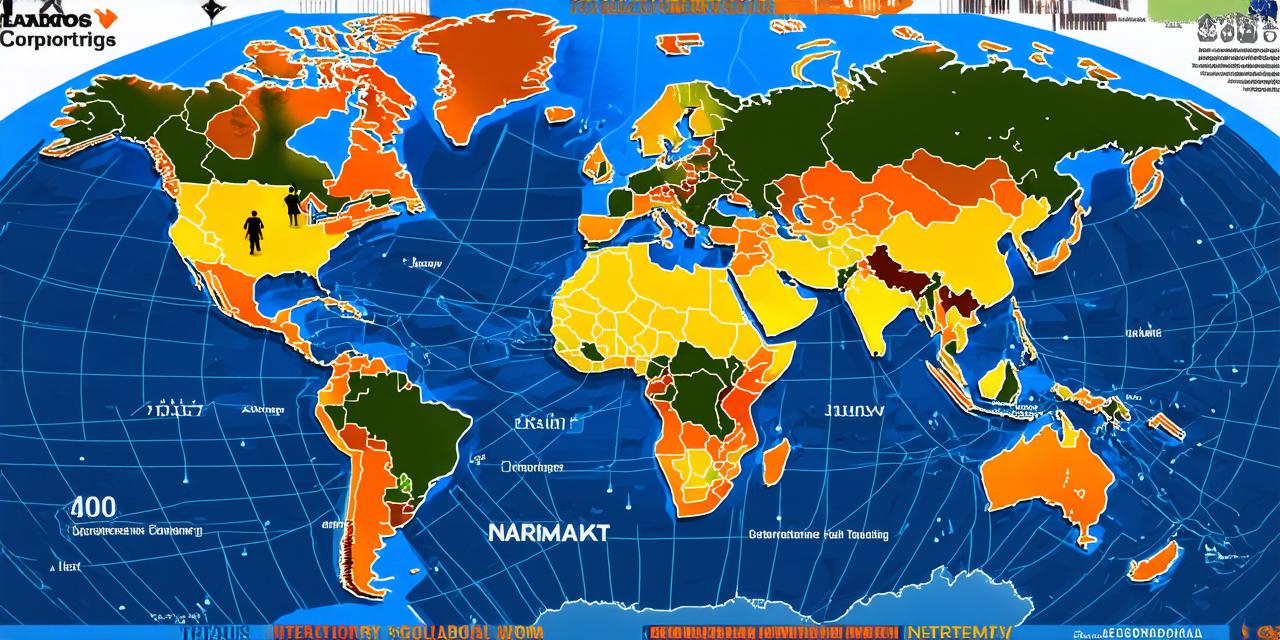Benefits of Outsourcing Across Geographical Borders:
One of the primary reasons businesses outsource is to reduce costs. By offshoring tasks or processes, companies can take advantage of lower labor costs and other operational expenses in different parts of the world. For example, a software development company based in India can provide high-quality services at a fraction of the cost of its counterpart in the United States.
Another benefit of outsourcing is access to specialized skills that may not be available locally. Companies can outsource tasks such as data entry or accounting, which require specific knowledge and expertise. For instance, a company based in Brazil can hire an accountant with experience in tax law to help navigate the complex tax system in the country.
Outsourcing can also lead to increased efficiency, as companies can focus on their core competencies while outsourcing tasks that are not critical to their business operations. By doing so, businesses can reduce downtime and increase productivity, which ultimately leads to better customer satisfaction and higher profitability. For example, a company based in the United States may outsource its accounting operations to a partner in India, allowing it to focus on its core competencies of product development and marketing.
Finally, outsourcing can help businesses gain a foothold in new markets. By outsourcing manufacturing operations to a partner in China, for example, a company based in Europe can tap into the growing Chinese market while maintaining its European base for research and development. This allows businesses to expand their reach and diversify their revenue streams.
Challenges of Outsourcing Across Geographical Borders:
While outsourcing across geographical borders offers significant benefits, it also presents several challenges that businesses must be aware of. One of the main challenges is cultural differences, which can affect communication, work ethics, and decision-making.
Businesses must adjust their communication style to better work with partners in different parts of the world. For instance, a company based in the United States may need to adjust its communication style to better work with partners in India, where there may be language barriers or cultural differences that affect communication.
Time zone issues can also present challenges when outsourcing across geographical borders. Businesses must find ways to coordinate schedules and ensure timely delivery of services, even when working with providers located in different parts of the world. For example, a company based in Australia may need to adjust its work hours to collaborate with partners in India or China, which are several time zones ahead.
Quality control is another challenge when outsourcing across geographical borders. Businesses must ensure that their providers meet high-quality standards and deliver services that meet their expectations. This requires effective communication and management skills, as well as strong governance processes to monitor performance and resolve issues.
Finally, legal and regulatory requirements can be complex and differ across jurisdictions. Businesses must ensure that they comply with all relevant laws and regulations in both their home country and the country where they are outsourcing services. This requires a deep understanding of local legal systems and practices, as well as the ability to navigate complex regulatory environments.
Examples of Successful Outsourcing Strategies:
Despite the challenges associated with outsourcing across geographical borders, many companies have successfully implemented outsourcing strategies to achieve their business goals. Here are some examples:
DHL:
DHL is a global logistics and transportation company that has partnerships with several Chinese e-commerce companies to help them expand their reach into new markets. The company’s logistics operations are based primarily in China, where it has a large network of warehouses and distribution centers. By leveraging its local expertise and infrastructure, DHL is able to provide end-to-end logistics solutions that enable Chinese e-commerce companies to reach customers around the world.
IBM:
IBM is a global technology company that offers cloud-based analytics services through its Watson Analytics platform. The company has offices in over 170 countries and uses a combination of onshore and offshore resources to deliver services to its clients. For instance, the company’s data analytics operations are based primarily in India, where it has a large pool of skilled analysts. By leveraging its global network of talent and expertise, IBM is able to provide high-quality analytics services that help businesses make data-driven decisions.
Amazon:
Amazon is one of the world’s largest e-commerce companies and has implemented outsourcing strategies across geographical borders to support its growth. The company has partnerships with several Chinese manufacturers to produce products for its online marketplace, as well as with logistics providers in different parts of the world to ensure timely delivery of goods to customers. By leveraging its global network of suppliers and logistics partners, Amazon is able to provide a seamless shopping experience to customers around the world.
Summary:
Outsourcing across geographical borders is a complex process that requires careful planning and execution to ensure success. While there are challenges associated with outsourcing, businesses can reap significant benefits from outsourcing, including cost savings, access to specialized skills, increased efficiency, and improved access to markets. By selecting the right partners, adapting communication styles, coordinating schedules, ensuring quality control, and complying with legal and regulatory requirements, businesses can successfully implement outsourcing strategies across geographical borders.

